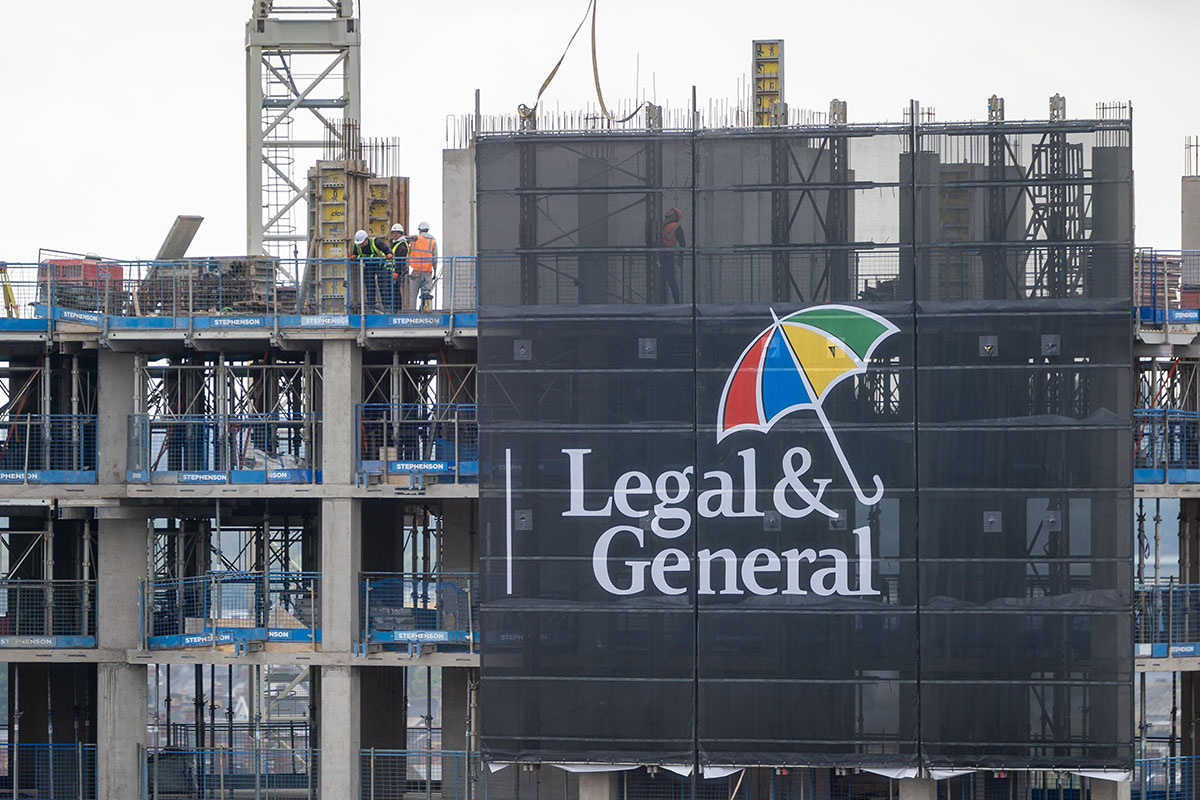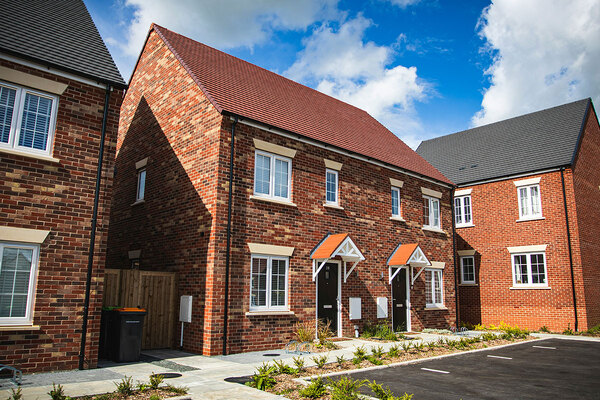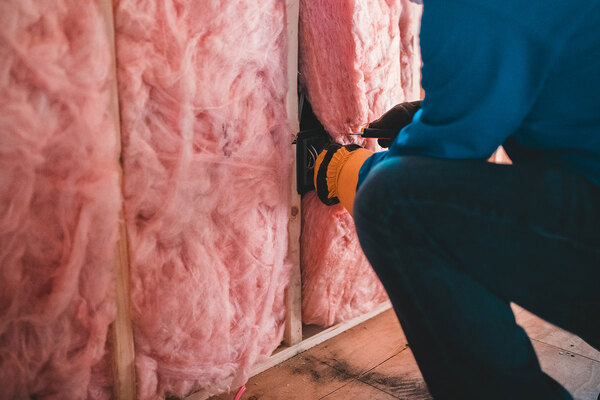You are viewing 1 of your 1 free articles
What is the future for shared ownership?
More than 40 years since shared ownership was introduced, there are question marks over its value as a tenure. Peter Apps asks what its future will be in the housing market

In 1980, Margaret Thatcher’s Housing Act introduced a major policy change that would prioritise homeownership over rented social housing and go on to have a major and controversial impact on the social housing sector.
No, not that policy. As well as being the source of the Right to Buy, the Housing Act 1980 gave birth to a new affordable housing tenure – one where residents would buy a share of the equity and rent the remainder at a discount: shared ownership. Forty-four years on, with a new government, a new economic backdrop and enduring controversy about its utility, what is the future for the tenure?
On one measure, shared ownership is in rude health. There were 20,517 shared ownership homes built in England in 2022-23, the highest figure since 2009-10. But the same period saw 13,500 starts – a seven-year low and a 40% fall from a peak of 22,414 in 2019-20.
This came amid a similar fall in affordable housing starts, as economic turbulence battered the sector, but also reflects some uncertainty about how shared ownership fits into a housing association’s objectives as the sector refocuses on existing homes and social rent.
Housing minister Matthew Pennycook, for example, recently wrote to Homes England, calling for it to ‘maximise’ the number of social rent homes being delivered through grant schemes.
At the same time, reforms to the product have led to it becoming less financially viable for housing associations, with responsibility for repairs sitting with the landlord for longer, and an MPs’ committee calling for further changes due to “unfair” service charges and other costs.
But with 250,000 homes already built, many more mortgage lenders in the market, the disappearance of the Help to Buy as an option for first-time buyers, big appetite from private investors through for-profit housing provider vehicles and potential for an estimated 100,000 more homes to be built in five years, is the future brighter than some suggest?
Matthew Bailes, chief executive of 17,000-home Paradigm, says that shared ownership will remain necessary if the government is serious about meeting its housebuilding ambitions.
“There is absolutely no chance of private developers building 300,000 homes a year by themselves, and that isn’t just about planning, it is also about absorption rates and their business model. Shared ownership helps with that, because it taps into a different bit of the market,” he says.
The product, he argues, remains the best option for those home buyers who cannot afford an outright deposit. There are 182 shared ownership properties currently available in Greater London, for example, where the initial deposit is £5,000 or less. This means it is available to buyers who would never be able to access any of the other homeownership wheezes that various governments have attempted over the years.
“I think this government needs an intermediate product that enables people to get a step on the housing ladder very badly if it’s going to meet its objectives. So if we’re going to move away from shared ownership, someone needs to think of something better very quickly,” Mr Bailes adds.
But getting people onto the housing ladder is only a good objective if they are satisfied with what happens next. So what about the long-standing controversies with shared ownership: escalating service charges, rising rents, struggles with selling and more?
“There’s quite a lot of discussion around the poor reputation of shared ownership, particularly shared ownership flats,” says Steve Partridge, head of the Affordable Housing Consultancy at Savills. “But I think the general view when we’ve looked into that is that it is describing a general leasehold issue rather than a shared ownership issue specifically.”
Sue Phillips, founder of Shared Ownership Resources, a consumer group that advocates for shared owners and provides support to those struggling with the product, takes a different view.
“There is an overlap between the problems shared owners face and problems encountered by leaseholders in general,” she says. “But most leaseholders weren’t sold their flat as an affordable housing product. So no matter how many pitfalls there are for leaseholders, and there are many, the affordability promise means shared ownership is being mis-sold even more seriously, because as soon as it starts to become unaffordable, the attitude very quickly changes to ‘caveat emptor’ [buyer beware].”
There is a danger, some argue, that the debate here is too London-centric. The London housing market typically results in flats, where the overall purchase price is vast, the rent is high and the service charge demands can be extortionate.
“The planning system, particularly in London, is spitting out properties for shared ownership that aren’t really suitable. So £800,000 flats in a riverside development that has a £700-a-month service charge isn’t really affordable housing,” says Mr Bailes.
“But if you go to Milton Keynes, people are buying low-rise flats or houses and it all looks rather different. A lot of people in those areas are better off, I think, in shared ownership, than the counterfactual, which is renting in the private rented sector.”
With a lot of London Labour MPs now in power – including some who have lived in shared ownership flats themselves – there is a political risk here.
“We’ve got a housing minister from London, and a lot of other London MPs who will have heard about shared ownership via their constituents,” says Amy Nettleton, assistant development director at Aster Group and co-founder of The SO Exchange. “So their view of shared ownership is very London-centric. We need to ensure that we are looking at how it performs up and down the country, and the houses and communities that are being built in areas other than London.”
20,517
Shared ownership homes built in England in 2022-23
182
Shared ownership homes available in Greater London
40%
Fall in starts on shared ownership homes from 2019-20 to 2022-23
But with this background controversy, as Labour looks to scale up social rent, will it therefore scale down shared ownership, by re-routing grant towards social rent? Mr Partridge does not think so. “I think the general view that seems to be coming out from officials and from Homes England is that it’s not about increasing social rents at the expense of shared ownership. It’s about increasing social rent in and of itself,” he says.
Ms Phillips, however, remains sceptical about its value, even outside London. “In some parts of the country, private rents are fairly stable and static, and that means the above-inflation rent rises in shared ownership can result in very poor value for money over the long term,” she says.
“People emphasise that you are still building up equity, but it has to be enough that it means something,” she adds. “If shared owners can’t accumulate sufficient equity on a share in a ‘starter home’ to make selling worthwhile, then what’s the point?”
One of the big questions about the future of shared ownership is who is it actually for? With only an estimated 2% to 3% of the total stock being ‘staircased’ up each year, the reality for many people is that they will just keep living as shared owners. Is this a good result?
Ms Nettleton says that there are some buyers for whom it works well under these circumstances. “What you’re seeing now is a much broader range of buyers: we are seeing people that are wanting to downsize but don’t want to go into retirement living… or families choosing shared ownership because it gives them security not available in the PRS.”
Gulf between provider and owner
Ms Phillips, though, is frustrated by a lack of long-term data about outcomes for shared owners. “For some people, the security turns into being trapped. They can’t sell and they can’t afford to stay,” she says. “There is an ongoing gulf between the social housing provider perspective, which tends to focus on demand and access, and the shared owner perspective. Satisfaction typically declines over time. Even then, it’s quite possibly overstated as new tenant satisfaction measures don’t assess satisfaction regarding ongoing affordability, or with shared ownership as a ‘foot on the housing ladder’.”
For Mr Bailes, there should be more focus on making it possible for people to staircase to full ownership. He says this could be achieved by fixing the overall price of the property, rather than asking buyers to purchase their future shares at the current market rate.
“Our modelling suggests that if you were to fix the price for five years and then index it at [inflation] thereafter, and then assume that people staircase much earlier than they would have under the existing model, what is lost in terms of windfall profits on sale would be gained by reducing the period over which we offer a subsidised rent. Earlier sales would also help providers free up balance sheet capacity and recycle grant more quickly.”
Floris ten Nijenhuis, founder of Stairpay, which assists shared owners in scaling up to full ownership, thinks that many more people could staircase if they had more support to do so.
“Typically, once you move into your shared interest home, the housing association is completely passive as to what happens to you,” he says. “I think the reason why people don’t staircase is that no one pushes them to and no one educates them on the process.”
He says that the shared ownership process should involve a much more thorough initial assessment of what people want from the product at the outset.
“That comes down to not only their ability to get 100% ownership, but also their intentions,” he says. “I think if you find someone who is in a public sector role with a salary which probably isn’t enough to get them to staircase, but they can afford the rent, and they’ve got 50% equity in the property, which is going up in value, and they’ve got security of tenure… then I think that’s a good use of shared ownership. Housing associations aren’t required to look beyond the affordability of the first 12 months, which I think is just completely wrong.”
This can cause problems because buyers can be required to purchase the maximum share they can afford, which will become unaffordable for them once rents, service charges and mortgage repayments rise.
Another important factor in the future of shared ownership is the growing appetite of investors. For-profit providers have increasingly looked at shared ownership as a tradeable asset in recent years, enticed by the inflation-linked rental payments and the capital gains on the property.
Blackstone-backed Sage Homes and UK-based institutions Legal & General and M&G have made major moves into the sector, purchasing large portfolios from associations and hoovering up properties developed by private builders due to planning requirements for affordable housing.
Mr ten Nijenhuis says: “I think private investors are going to end up taking over shared ownership in the next 10 years. Those people mostly look at it because of the fact that it’s inflation-linked, especially the rent, because it allows them to match pension fund liabilities,” he says.
“When you look at the new shared ownership being delivered, a large and growing proportion of it is being delivered by the for-profits. I think that as more institutional money comes in, eventually it’ll make more sense for those people to be the ones delivering shared ownership and for housing associations to focus on their core product, which is social rent.”
This likely gives shared ownership a future, regardless of what the government thinks. But as the product increasingly becomes a profit-generating asset for pension and investment funds, ironing out the problems and understanding who it really works for has never been more important.
Recent longform articles by Peter Apps
Cladding remediation: why is progress so slow?
It has been nearly seven years since the Grenfell fire, yet thousands of buildings are still in need of cladding remediation. Peter Apps investigates why the process has been moving at such a glacial pace
How a ‘Google Maps of heat loss’ might make retrofit easier to plan
Technology is opening up new ways to quickly assess which homes are leaking heat, making them a priority to retrofit. Peter Apps reports
What it is like to live in Nine Elms as an affordable housing resident
While the wealthy private owners of flats in Nine Elms enjoy the use of the swimming pool and orangery, affordable housing tenants are struggling to get repairs done. Peter Apps reports
The water will come: how should the social housing sector prepare for a wetter world?
Peter Apps looks at how social landlords should prepare themselves to respond to flood emergencies, which are set to become more frequent as the climate changes
The office-to-residential conversions which have become slum housing
Poorly converted office blocks are putting people in temporary accommodation at risk of serious harm. Peter Apps reports










